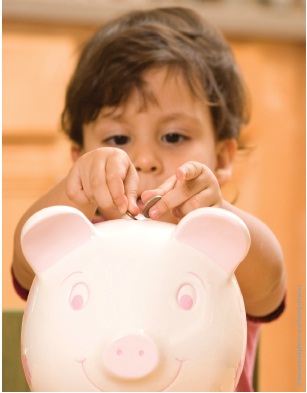Teaching your kids the value of money
by Thea Gould
Before having children, I would never have assumed that the fact that my husband and I can adequately provide for them could in fact be a problem. However, in certain respects, as I have found, it can be…
For me, the whole conversation began when my child started trying to flag down taxis because he did not want to walk to school, and as he said, “the bus took too long to arrive”. Where necessary, I have been known to take a taxi, however, I would prefer to save my money for other luxuries by taking the bus or walking. My child was unable to understand what the difference was, and of course preferred the comfort and convenience of the taxi option.
This was when I realized that I needed to begin to teach my children the value of money as well as the concept of opportunity costs—a difficult enough concept for me to get to grips with! Around the same time I also started to think about the society that I am bringing my children up in.
We are not the wealthiest family on the block, however, we have a very comfortable standard of living: our children go to international schools, we can afford to pay for them to attend after-school clubs, send them on school trips, buy them equipment, books and clothes, as well as have overseas holidays and ensure that life is generally a lot of fun. In general they do not have to want very hard for anything before it appears right before them, but compared to some of our children’s friends’ parents, we are positively stingy. My children, I realized, were growing up in a wealthy society, and I felt it was important to give them a sense of the fact that they, and their peers, have very privileged lives in terms of material wealth.
The following suggestions are by no means the right way to teach your children about money, or even a comprehensive method. They are merely my ideas. Every child is unique and so I can only tell you about what I have tried, and what has been successful for my children. However, even when it works, it is an on-going process that needs to be revised on a regular basis.
For me the whole conversation began
when my child started trying to flag
down taxis because he did not want to
walk to school…
My first objective was to give my children an understanding of monetary value, a sense of what money ‘costs’. To do this, we worked together to come up with a list of jobs for them to do around the house, and decided how much they would receive for completing these jobs. They also decided on something that they really wanted to buy. Once these two things were established, we were able to discuss how many days, or how many jobs it would require them to do, in order to buy what they wanted. This helped them to understand what things cost, and they were so delighted when they were able to finally buy the thing they had set their sights on. I know that some people prefer not to reward Teaching your kids the value of money, by Thea Gould Children and Finance their children for doing the jobs that they should do anyway around the house, so I am sure there are other ways to ‘pay’ your children, however, I figured that it was not too early to understand that people were paid for doing jobs, and that it takes work to get money. One side benefit of this scheme was that it also enabled me to reward the children for extra good behavior, good school reports, and for doing well in activities. I was also able to introduce a ‘fine’ system for undesirable behavior!
Once I had given my children their money, the hardest part (and this came from a parenting book), was to give them the freedom with which to spend it; which meant giving them the carte blanche to waste it on arcade games, spend it all on cheap toys that were going to break almost before we got them home, or on toys that I would not have bought them myself (within reason). This also taught them a sense of value, and opportunity costs. Once the money was gone for that week, it was gone—this also means that you have to resist stepping in with loans!
The process of giving my children a sense of the privileged lives that they have is an ongoing process, however I have never forgotten the advice of a friend’s grandmother; you should divide all money that you have coming in into three; a third for spending, a third for saving and a third for charity. Once my eldest child turned seven he agreed to put one third of his birthday money into savings, he also asked his friends to donate money to a charity instead of buying him presents. For our part, we gave him 10 percent of the money collected to spend on a present for himself.
My children are still too young to really understand what I would like to teach them, but at least we are making a start.









